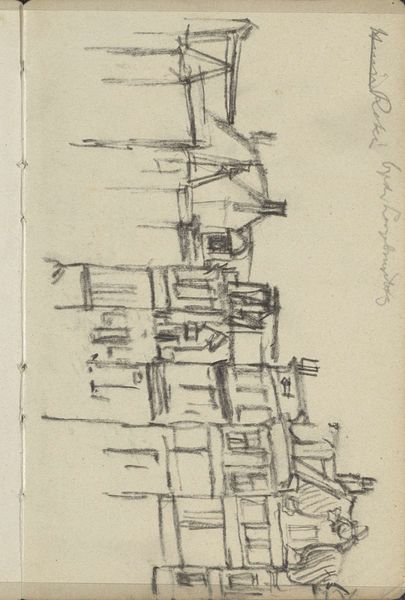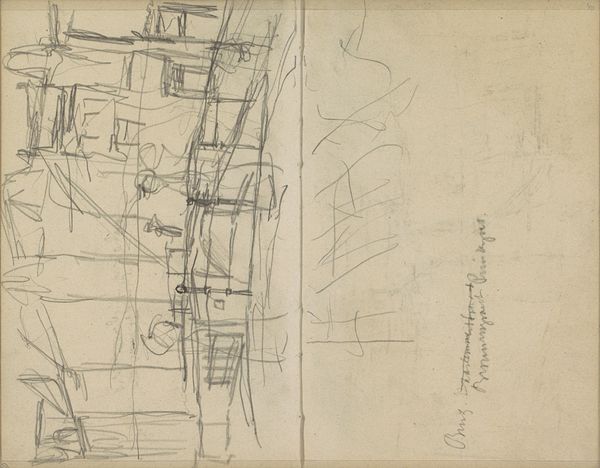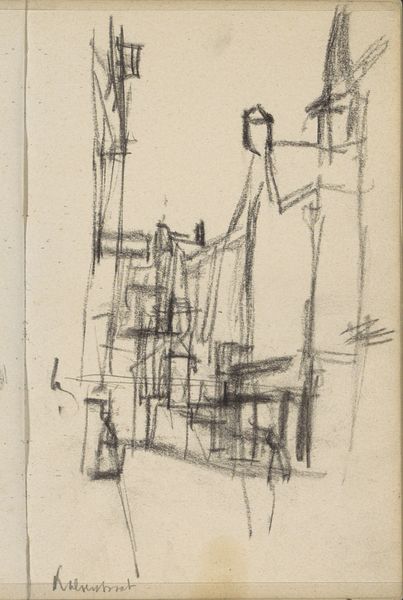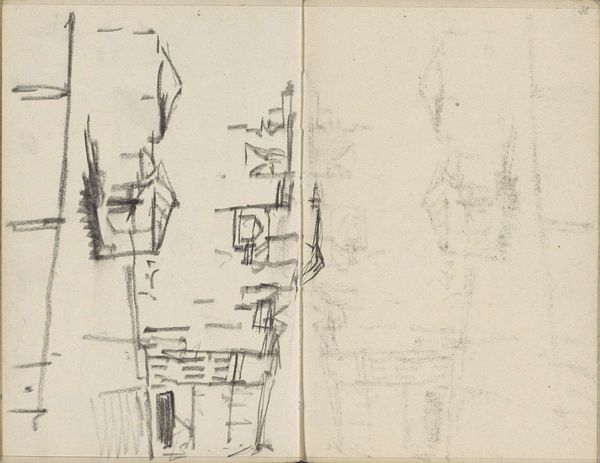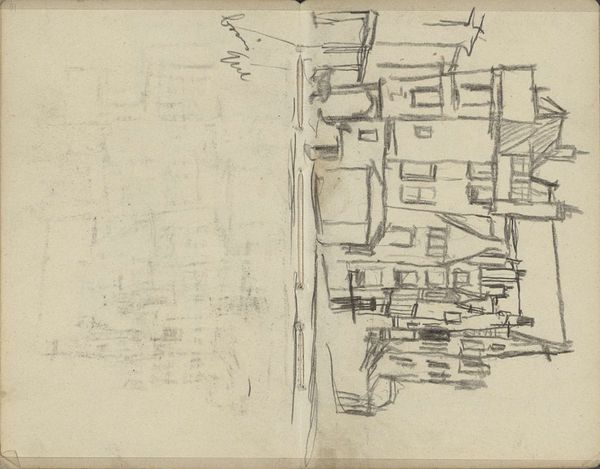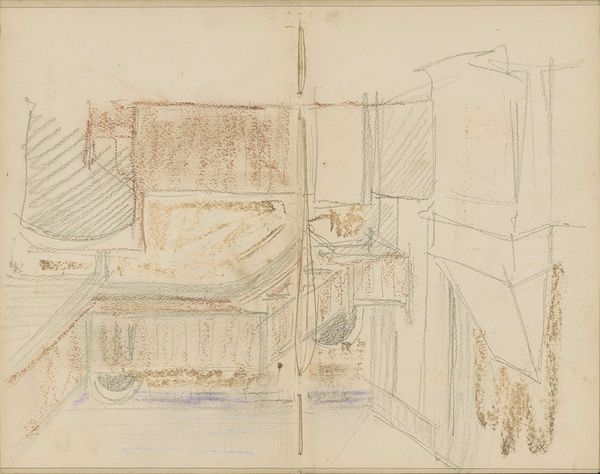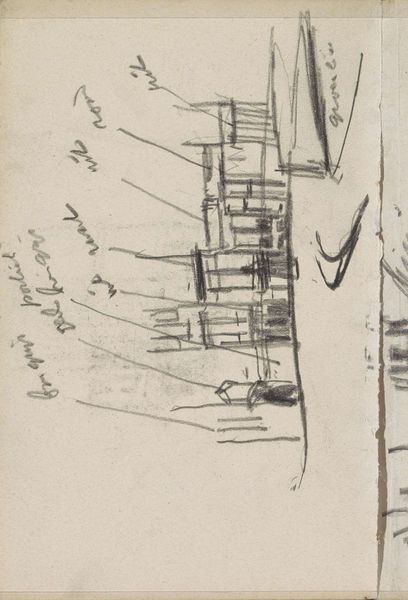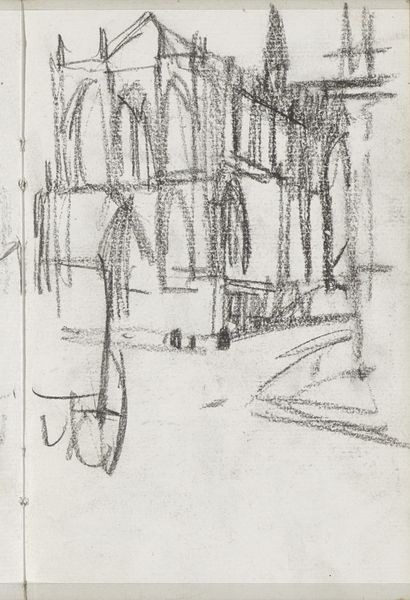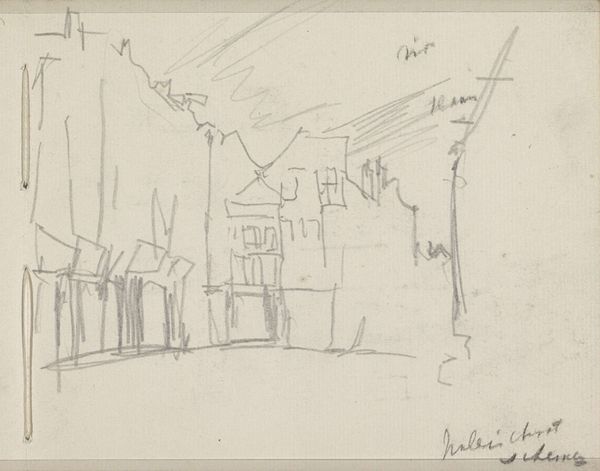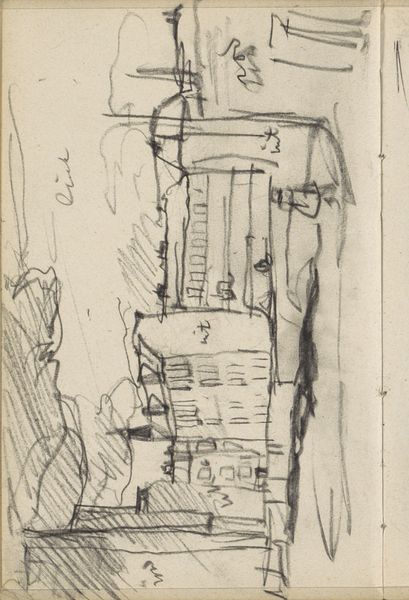
Gezicht op het Singel te Amsterdam, mogelijk met de Haarlemmersluis 1894
0:00
0:00
Dimensions: height 108 mm, width 136 mm
Copyright: Rijks Museum: Open Domain
Curator: Here we have George Hendrik Breitner's "View of the Singel in Amsterdam, possibly with the Haarlemmersluis," a drawing in ink on paper from 1894. Editor: My first thought is 'sketch in motion.' It feels like a snapshot of a fleeting moment, captured with an urgency that vibrates through the quick strokes. Curator: Breitner was, after all, a chronicler of modern urban life. Think of him as a visual reporter capturing the pulse of Amsterdam during its period of rapid growth. What sociopolitical factors might have fueled the development of Amsterdam? Editor: The end of the 19th century saw significant shifts in Dutch society – industrialization, urbanization, and growing class consciousness. Art was being shaped by—and in turn was helping to shape—debates around national identity and progress. I wonder if the hurried strokes capture some of that frenetic energy, maybe even the anxieties. And I'm curious about the public role of this sort of rapid work; how does the imagery itself either reflect, challenge, or subvert expectations? Curator: Consider Breitner's background, his association with the Amsterdam Impressionists. They reacted against academic tradition, striving to represent their immediate sensory experiences of the world. It wasn’t simply about painting what they saw, but how they saw it – the fleeting light, the changing atmosphere, the very sensations of being in a place. The materiality seems urgent, doesn’t it? Editor: Absolutely, you get that impression from the sketchiness, the incompleteness, even. We are getting this brief image; the gender and racial dimensions here, the people absent from the streets—it makes me wonder who's absent from this vision of modernity. Curator: It underscores how seemingly "objective" depictions of urban life are, in fact, shaped by particular perspectives, influenced by power dynamics. Who is deemed visible? Whose experiences are valued? Whose narratives are amplified or silenced in the creation and consumption of these images? These questions remind us to consider these works in intersectional ways that explore identity, politics, gender, race and historical contexts. Editor: Agreed. Breitner gives us a slice of Amsterdam. It becomes, in our contemporary view, a valuable window onto the social fabric—or maybe threads—of the city at that moment, fraying in some spots, but creating a dynamic texture. Curator: Exactly, a texture of change, of life lived in that time and place. Editor: A single drawing, now raising such complex issues, doesn't it?
Comments
No comments
Be the first to comment and join the conversation on the ultimate creative platform.
